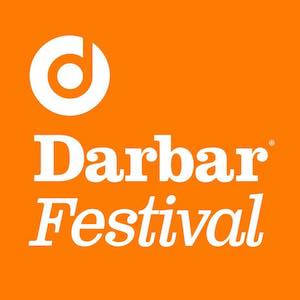Kaushiki Chakraborty: Morning Meditation — Raag Basant Mukhari
- Subscribe to BrightStar
- Follow Us:
Kaushiki Chakraborty: Morning Meditation — Raag Basant Mukhari
Welcome to the Darbar VR360 Festival. We’ve released over 50 immersive VR videos showcasing some of India’s finest artists performing in breathtaking natural landscapes, spanning Hindustani, Carnatic, Dhrupad, and percussion.
For the best experience use a VR headset with headphones. Experience being the sole ‘audience member’ right next to the musicians for your own private raga performance, enjoying the music amidst India’s natural world. For more info, including the full program, see www.darbar.org/video360
Kaushiki Chakraborty’s astonishing khayal vocal technique is the result of years of intense training. She spent much of her childhood living at the ITC Sangeet Research Academy, one of India’s premiere music institutions, while her esteemed father Pandit Ajoy Chakraborty worked there as a khayal scholar.
Staff at the academy are said to recall how she would respond to melodic phrases at six months old, and how she was singing tarana and bhajan before the age of two. In Kaushiki’s words, “by the time I was five my singing made sense…such was my addiction that it was beyond my grandparents to tame and make me sit with books”. Quickly hailed as a prodigy, she entered the concert arena early to great acclaim, performing widely while also earning a Masters in Philosophy from Jadavpur University.
Her Patiala gharana is known for a strong Islamic influence and elaborate melodic ornamentation. She is one of the first female Patiala singers to receive international recognition – chiefly gained through her Hindustani classical performances, but also through work in film and popular music. She also leads Sakhi, a diverse group of female artists, explaining that the project “is about understanding, from a female perspective, the diverse culture of India through all its traditional musical forms.”
“One has to mentally align oneself to the form…My training has taught me two approaches to music – to do music and or to become it. The latter gives you the fluidity to transcend form and become one with it.” (Kaushiki Chakraborty)
Basant Mukhari is often described as a blend of two famous dawn ragas – Bhairav and Bhairavi. But no raga can really be summarised as simply as this – each combination brings its own distinct moods, flavours, and colours as well as those of its constituent parts. Besides, Basant Mukhari’s history is far more complex than a mere melodic addition.
Sitarist-scholar Deepak Raja, writing in Sruti magazine, says that it is “widely acknowledged as the Hindustani adaptation of the Carnatic raga Vakulabharanam”, whose import was “associated with the eclectic initiatives of Acharya S.N. Ratanjankar, the founder principal of the Maris College of Music in Lucknow” in the early 20th century.
But Raja also notes that the modern Basant Mukhari is essentially identical to the now-extinct Raag Hijaz, an old North Indian form based on a popular Middle Eastern scale. To further complicate things, Basant Mukhari seems to have no direct links to its near-namesake, the springtime Raag Basant.
It takes the swaras SrGmPdnS, with the Re and Dha often tuned ati komal (extra flat). Like many other imported ragas, it allows artists, unconstrained by the detail of well-established conventions, to explore in many different directions. Performers must choose how to accentuate and balance its different flavours – Bhairav in the poorvang (lower scale tones), Bhairavi in the uttarang (upper scale tones), and other phraseologies including those suggestive of Ahir Bhairav, Jogiya, and even Malkauns. It enjoys wide popularity, and interpretations of it continue to proliferate.
Recorded by Darbar in 2019, on location in West India:
-Kaushiki Chakraborty (khayal vocal)
-Sanghamitra Sarkar (tanpura)
Technical team credit:
-Jagdeep Shah (DOP)
-Sandeep Virdee (location sound)
-Nirmal Singh (360 editor)
-Christoph Bracher (ambisonic sound dubbing)
-Special thanks to Sherna Chatterjee & Mortimer Chatterjee
Darbar believes in the power of Indian classical arts to stir, thrill and inspire. Through shared experiences and digital connectivity we ensure that one of the world’s finest art forms reaches the widest possible audience. Founded in 2006, we deliver premium quality live events, music education, broadcasts and online engagement through promoting artistic innovation and creative technology.
All Rights Reserved ©2019 Darbar Arts Culture Heritage Trust


